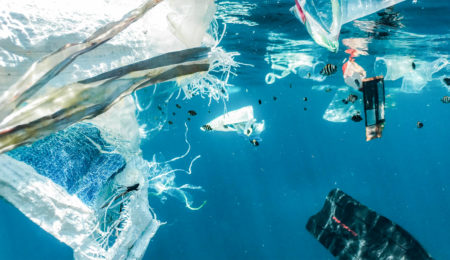Fast times at the water supply
Allan Johnson | Fulcrum Contributor
YOU MIGHT BE aware that the world’s population consumes a huge number of prescription drugs each year—so much so that drugs are becoming a contributor to water pollution. There’s a relatively simple way to understand the effect of contaminants like prescription drugs on the environment—just take a look at fish. Throughout their lives, they’re exposed constantly to whatever is placed into the water, and the environmental effect of pharmaceuticals can be examined by looking at what happens to their physiology. So what kind of effects can we expect to see?
The researcher
Dr. Thomas Moon is a professor of biology at the University of Ottawa. Moon, who has a background in biochemistry, works on understanding how organisms adapt and react to changes in their environment. Originally focusing on hormonal responses, he now focuses on toxicology.
According to Moon, because “many toxicants work the same way hormones do,” the expertise transferred over easily.
The project
Statins, a class of cholesterol-lowering drugs, are the most prescribed drugs in the world. To study the effects of statin concentrations in the aquatic environment, Moon and his students exposed zebrafish embryos to an environment with a concentration of statins 100 to 1,000 times higher than what is found in water today. The results were both dramatic and mysterious.
“Within two days, the fish develop a cerebral hemorrhage,” said Moon. “After five days, the blood has disappeared, and the animal seems quite normal.”
The issue is that making cholesterol is a multistep process, and statins block this pathway at a very early stage. This pathway doesn’t just result in cholesterol, though—it also creates other products vital for cells to function. One of these is a class of proteins that link other proteins to cell membranes. Without them, barriers that were meant to be rigid can end up being flimsy. If that barrier is a blood vessel in the brain, it can result in a hemorrhage. In a human this is obviously bad news, but an animal like a zebrafish can survive a hemorrhage—though how they heal themselves remains a mystery.
Even after the zebrafish has healed from the hemorrhaging, there may be long-term effects to consider. Neural damage appears to occur with the hemorrhage and other processes may be affected by the statins. Another concern: could such damage be passed down to subsequent generations? As our water filtration systems aren’t equipped to remove trace drug quantities and our hunger for pharmaceuticals shows no signs of slowing, understanding how animals will respond will only become more important.




